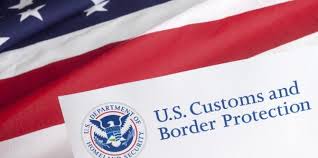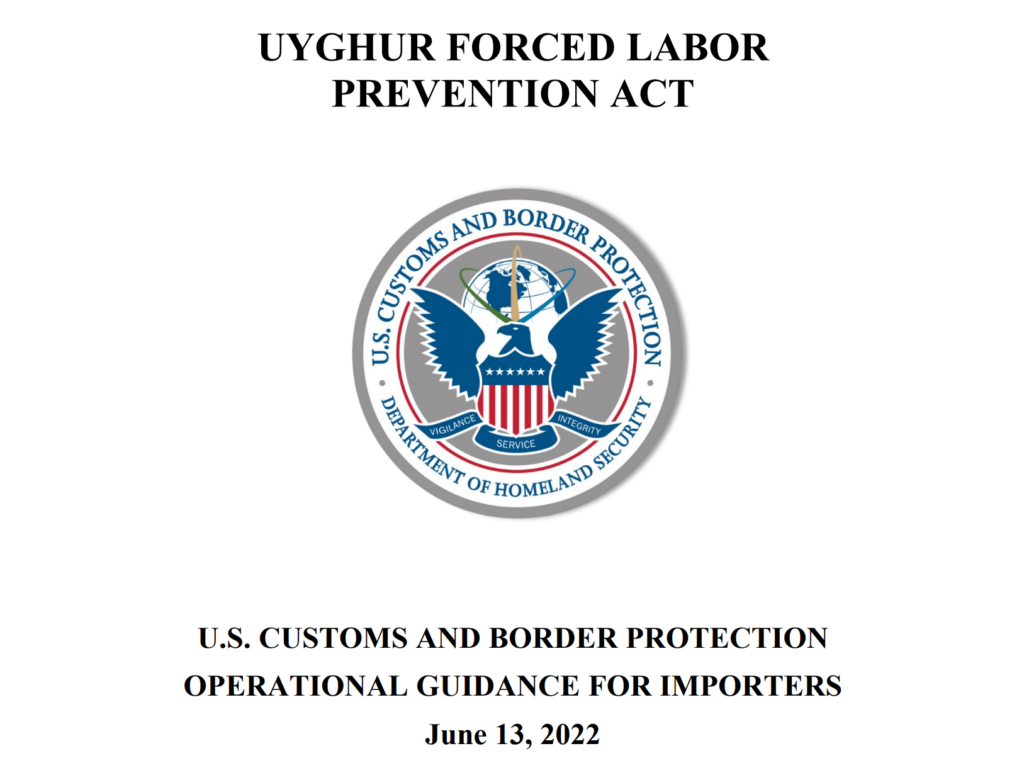
Alexander Cotoia is currently Regulatory Compliance Manager at The Volkov Law Group, where he routinely advises the firm and its clients on domestic and international developments implicating the regulation of global supply chains. He may be reached at acotoia@volkovlaw.com.
On December 31, 2021, President Joseph R. Biden, Jr. signed the the Uyghur Forced Labor Prevention Act (“UFLPA”) into law to address the ongoing exploitation of the ethnic minority Uyghur population by the government of the People’s Republic of China (“PRC”). Among other things, the UFLPA creates a rebuttable presumption that all goods, wares, articles, and merchandise mined, produced, or manufactured wholly or in part in Xinjiang, or by entities designated for inclusion on the UFLPA Entity List, are prohibited from entry into the United States. To overcome the presumption, entities are required to demonstrate, by “clear and convincing evidence,” that such imports were not mined, produced, or manufactured in whole or in part by forced labor.
A growing number of entities whose manufacturing and production processes rely on the timely importation of certain commodities carrying a high risk of forced labor have found themselves subject to the UFLPA’s proscriptions. Indeed, since enforcement of the law commenced in June 2022, more than 6,300 shipments valued at approximately $2 billion have been reviewed by CBP for UFLPA applicability, with approximately 30% of such shipments ultimately excluded for entry altogether. CBP’s own statistics demonstrate that the vast majority of shipments reviewed under the guise of the UFLPA are electronic commodities having an estimated value exceeding $1.8 billion. This is followed by commodities classified as apparel, footwear and textiles, as well as industrial and manufacturing materials. Curiously, however, the majority of reviewed shipments typically originate from Malaysia and Vietnam rather than the PRC directly—a statistic largely attributable to the fact that both countries are popular sources of low-cost semiconductors and solar panels.

Businesses that rely on imports from any region identified as posing a higher-than-average risk of forced labor are particularly vulnerable to supply chain interruptions arising from an operational risk perspective. To mitigate the potential that such disruptions may occur as a result of CBP’s commitment to vigorous enforcement of the UFLPA, businesses are required to implement the comprehensive risk mitigation framework contained in CBP’s Operational Guidance for Importers (“Operational Guidance”). The chief risk mitigation measure organizations must adopt in relation to UFLPA compliance is supply chain tracing—a comprehensive exercise that requires the importer of record to: (1) identify each actor involved in the manufacture and production of the imported commodity and its constituent components; and (2) obtain assurances from those actors (in the form of an affidavit or otherwise) that neither the commodity nor its constituent components were mined, produced, or manufactured in reliance on forced labor. While such attestations may be difficult to obtain—owing to the reluctance of many entities to subject their labor practices to unwanted foreign scrutiny—they are a vital part of ensuring that the organization is capable of overcoming the statutory presumption. To that end, businesses should communicate their expectations to all contractual counterparties up front, and require that those entities adhere to a supplier-specific code of conduct that incorporates forced labor prohibitions. These contractual counterparties should further commit to extending forced labor restrictions and other regulatory requirements to any third party on which they rely to provide the product in question to the importer of record. Finally, any definitive agreements reached with third parties in high-risk jurisdictions should contain robust audit and inspection rights, as well as the option for immediate termination for cause should the third party fail to observe forced labor proscriptions.
CBP’s Operational Guidance also requires that importers of record maintain documentation demonstrating that they have adopted internal controls sufficient to detect and address forced labor risks and that such controls are part of a broader system of operating or accounting protocols that includes audited financial statements. While the Operational Guidance itself sheds little light on what constitutes sufficient internal controls, the Department of Homeland Security’s broader UFLPA Strategy speaks to the need for effective “supply chain management” practices, of which internal controls are a major component. According to the UFLPA Strategy, “effective” supply chain management measures include, but are not limited to, the adoption of a due diligence process to vet potential suppliers for forced labor practices prior to contract consummation; the inclusion of corrective action provisions in supplier contracts that require the supplier to take remedial action in the event forced labor is identified in the supply chain; and the clear articulation of consequences if corrective action is not taken by the supplier, up to and including contractual termination. These measures should be augmented by an information management system capable of housing and integrating mapping materials and risk assessment information and generating key insights for internal stakeholders on the nature of forced labor risks on an enterprise-wide basis. Critically, these materials should be updated regularly to ensure that they remain relevant and applicable.
While businesses faced with the actual detention of goods under the UFLPA are obligated to furnish CBP with a host of additional information governing the specific transaction at issue—including contracts, purchase orders, invoices, packing lists, cargo manifests, and other documents—the adoption of a proactive risk mitigation strategy that focuses squarely on effective supply chain mapping and management is a sound foundation for UFLPA compliance. Importers that fail to adopt these preventative measures now face the very real potential that their imports could be systematically excluded from reaching their final destination altogether; a devastating outcome that could jeopardize business continuity itself.
Recent Comments